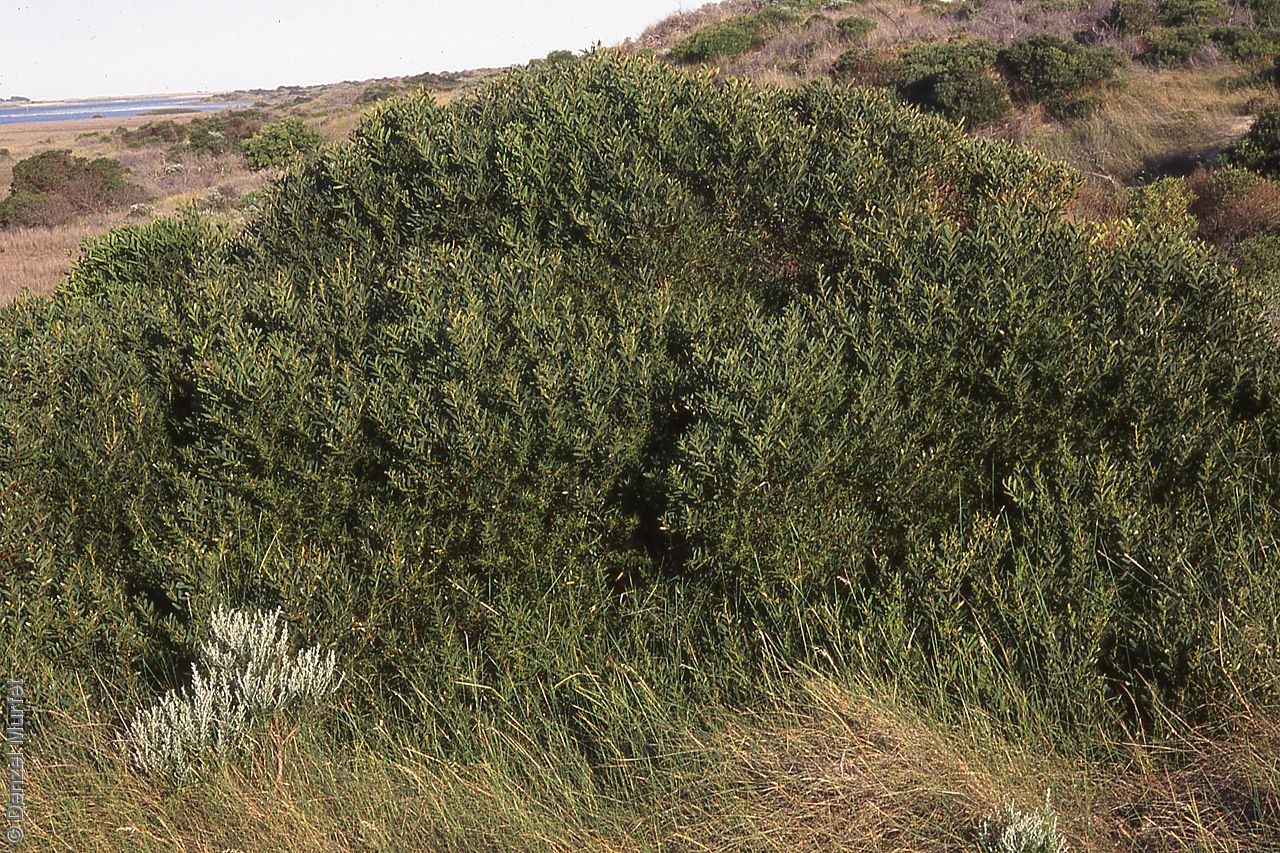
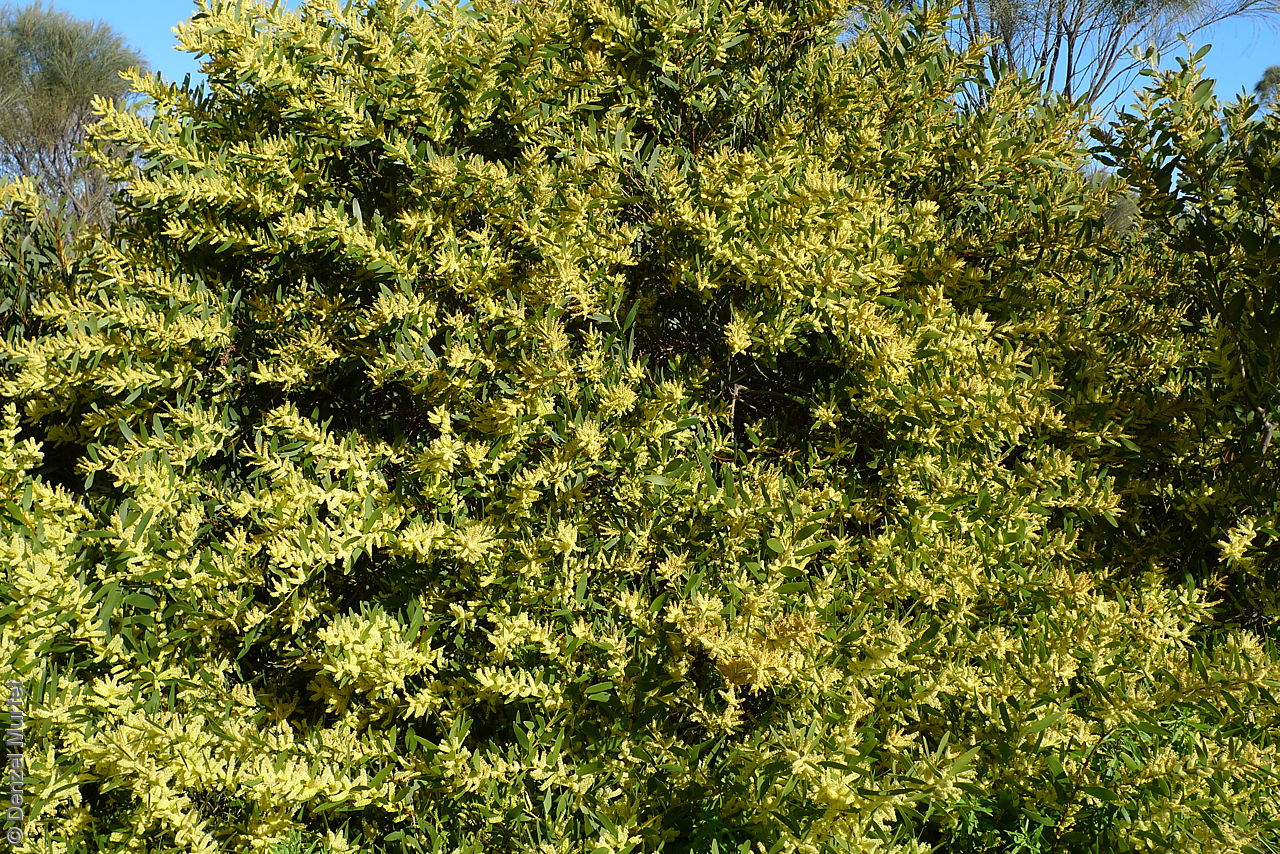
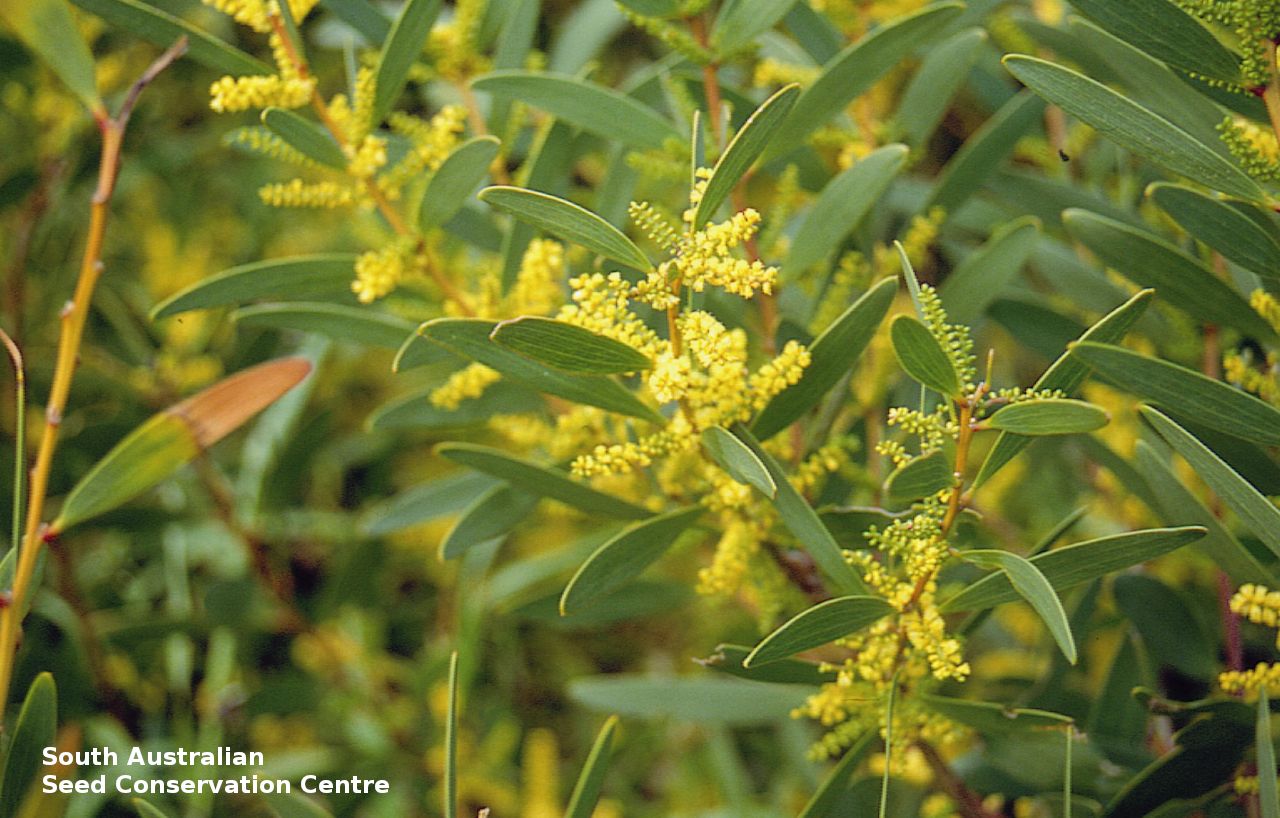
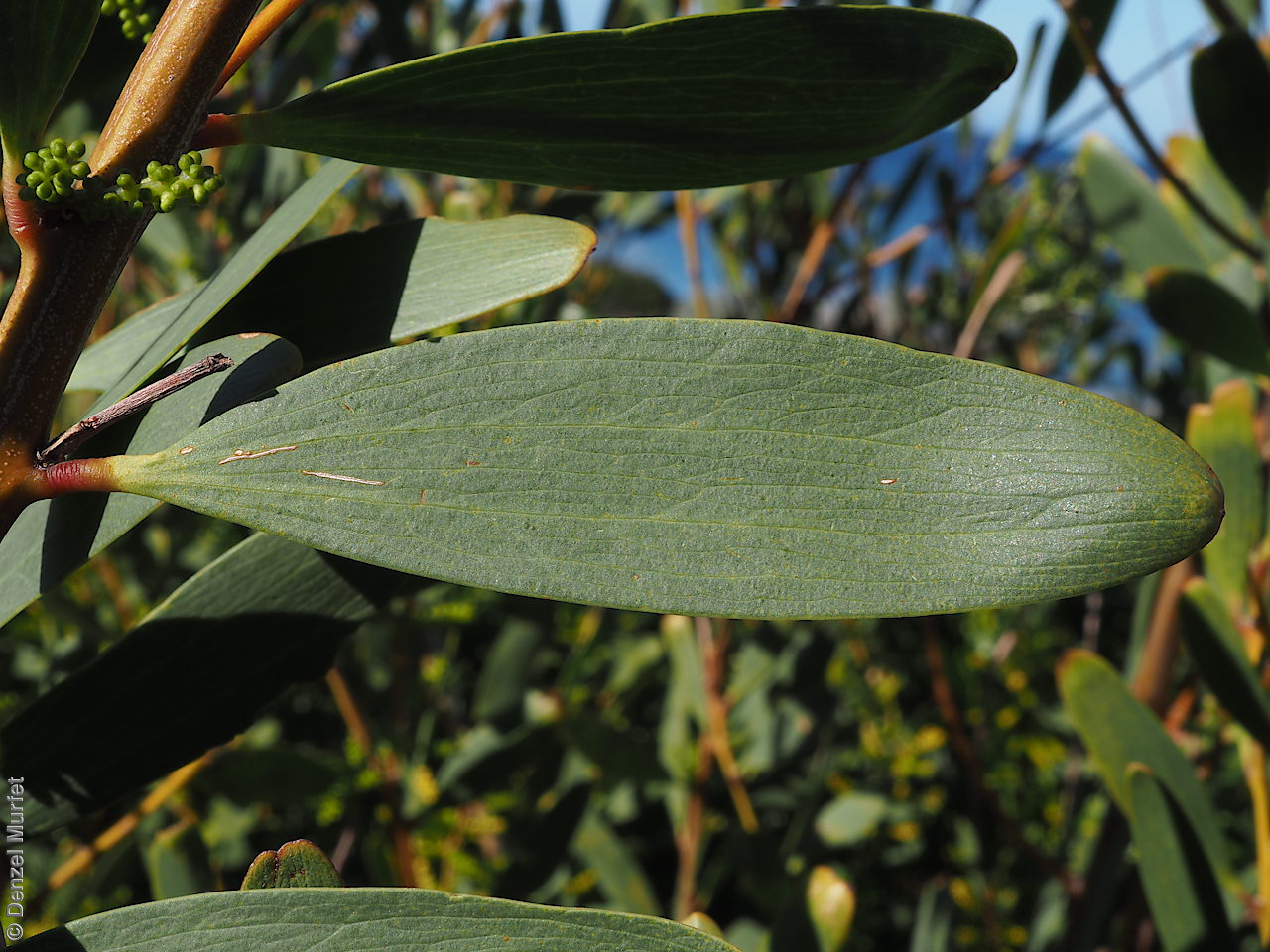
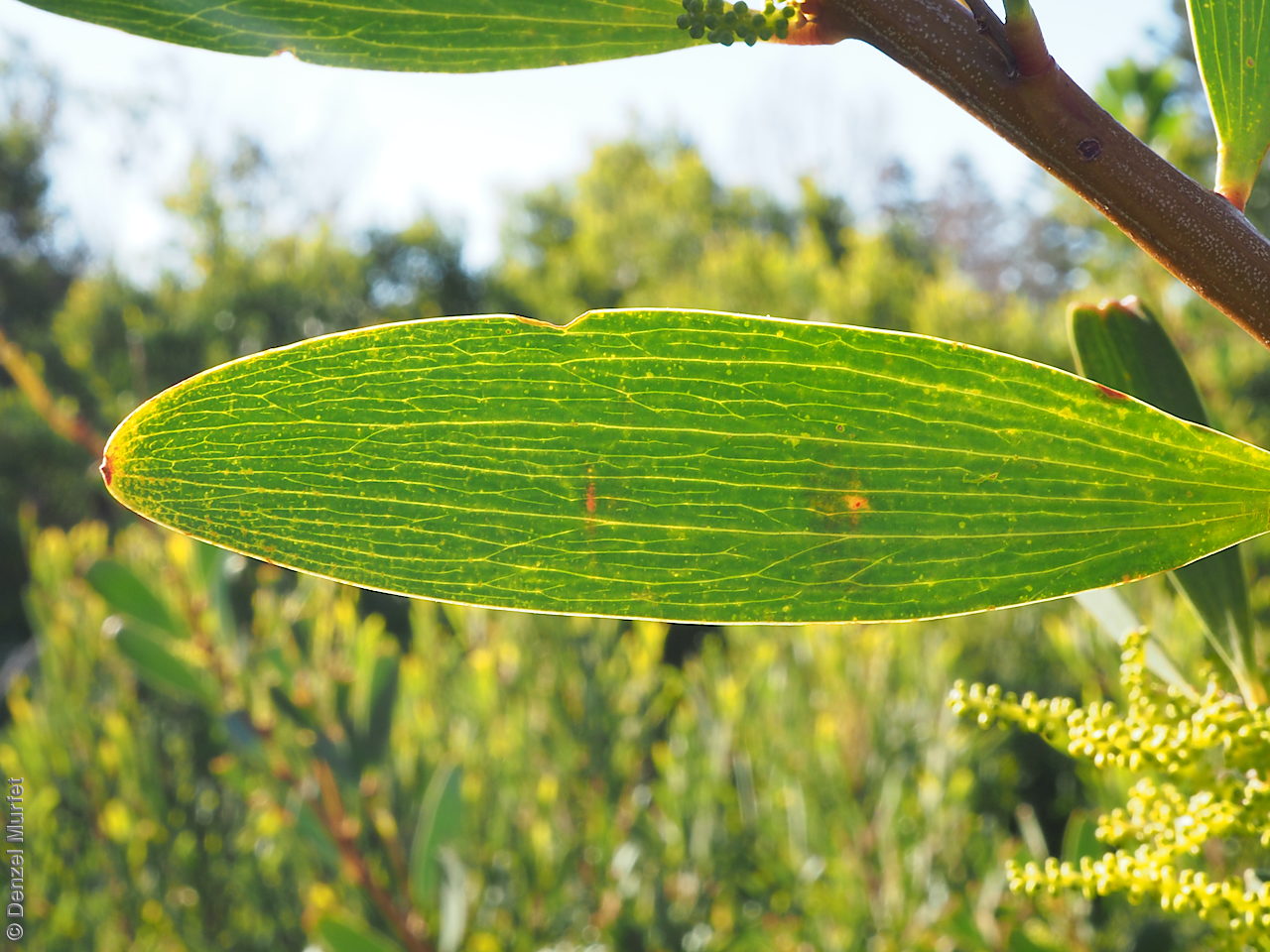
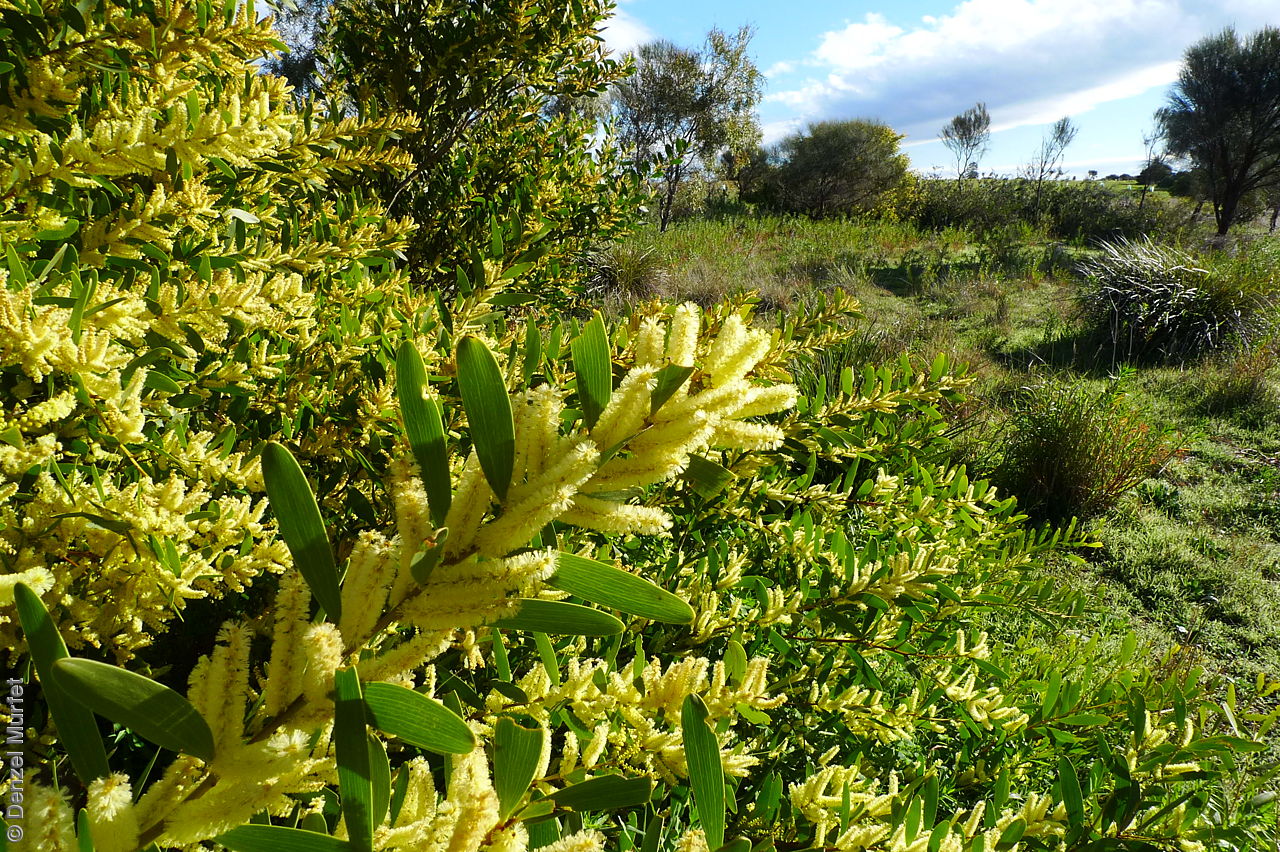
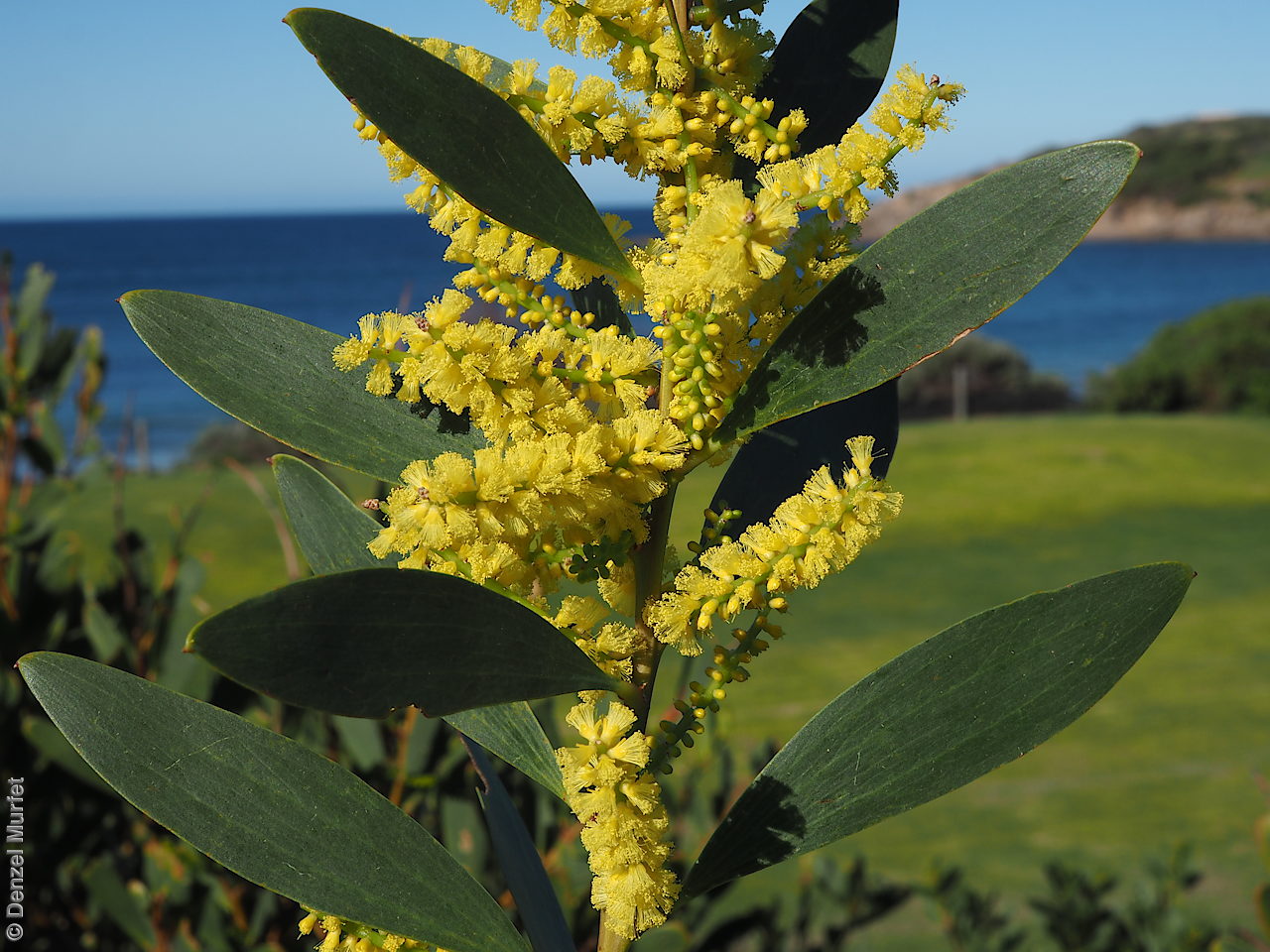
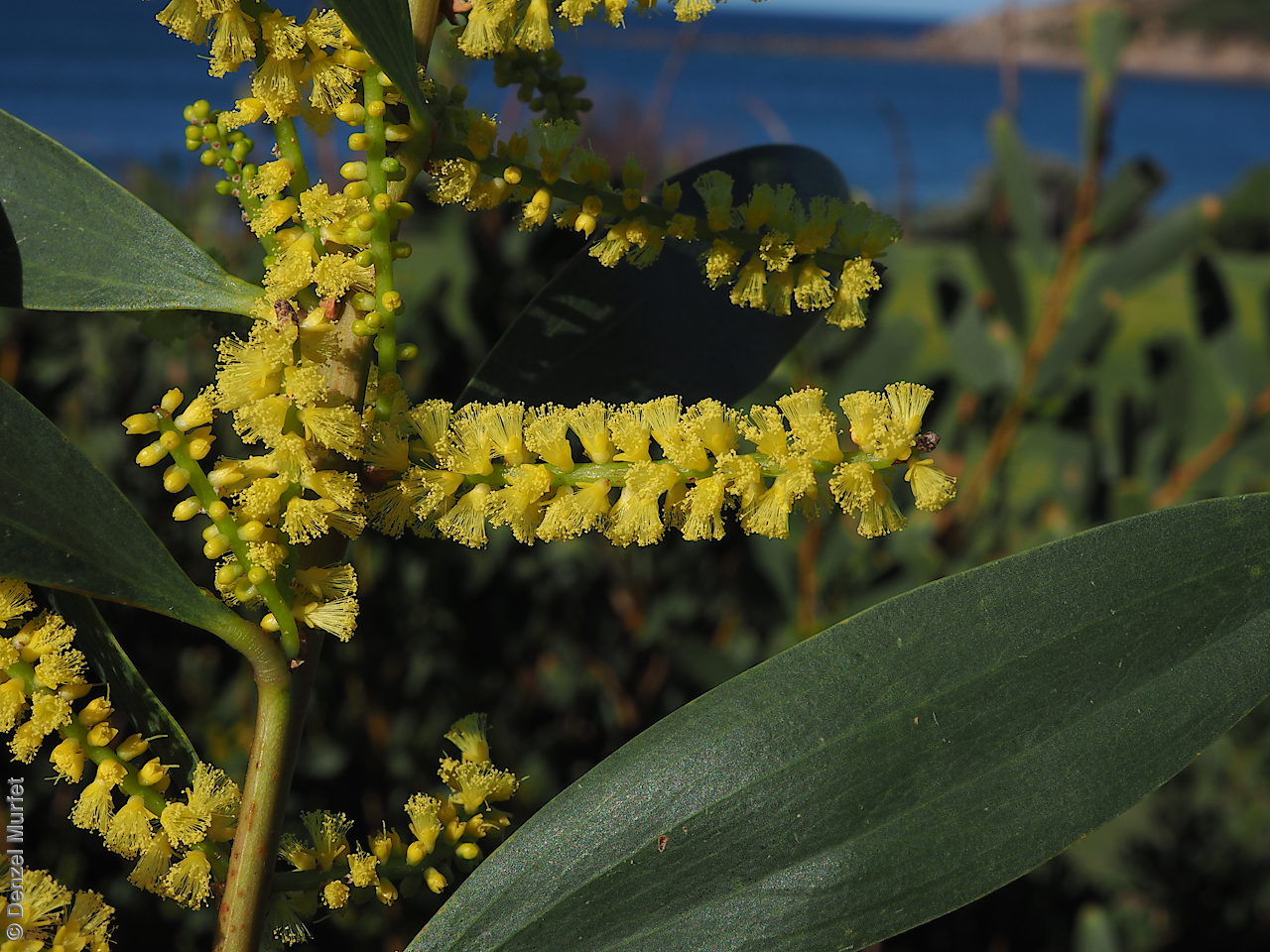
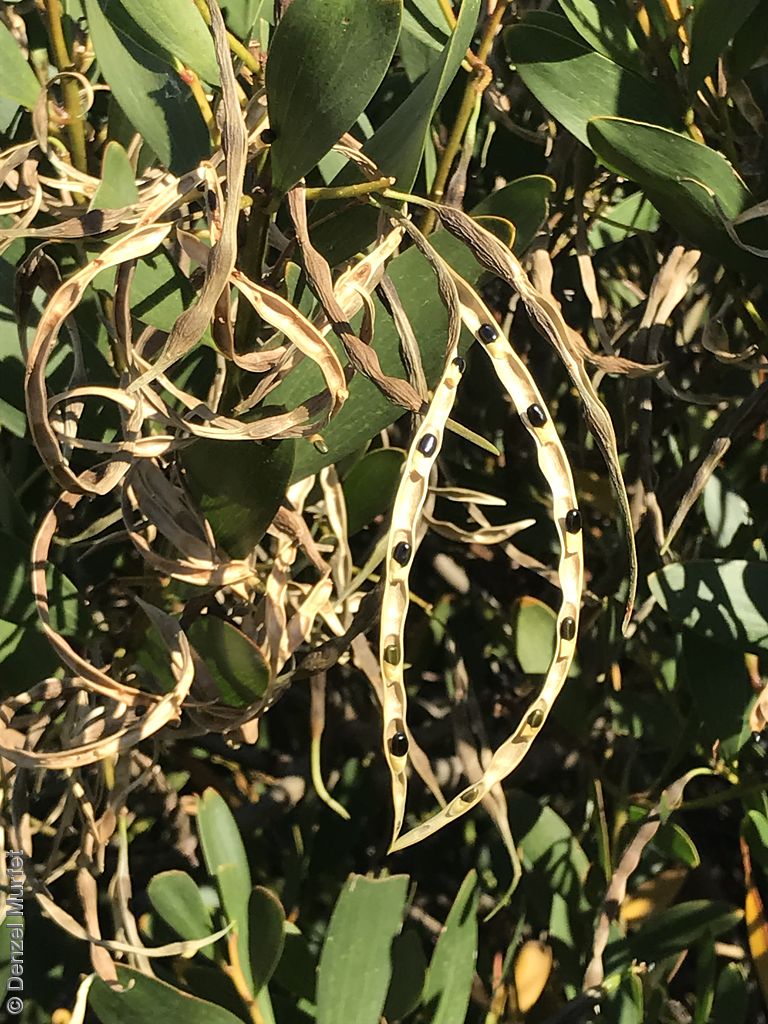
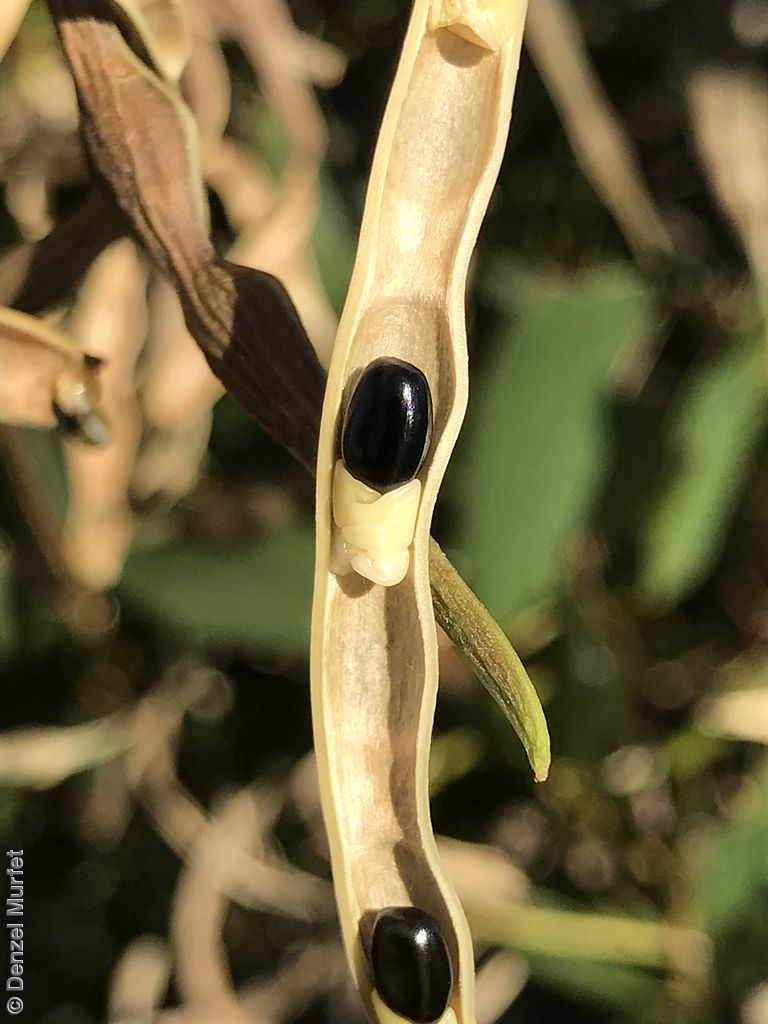
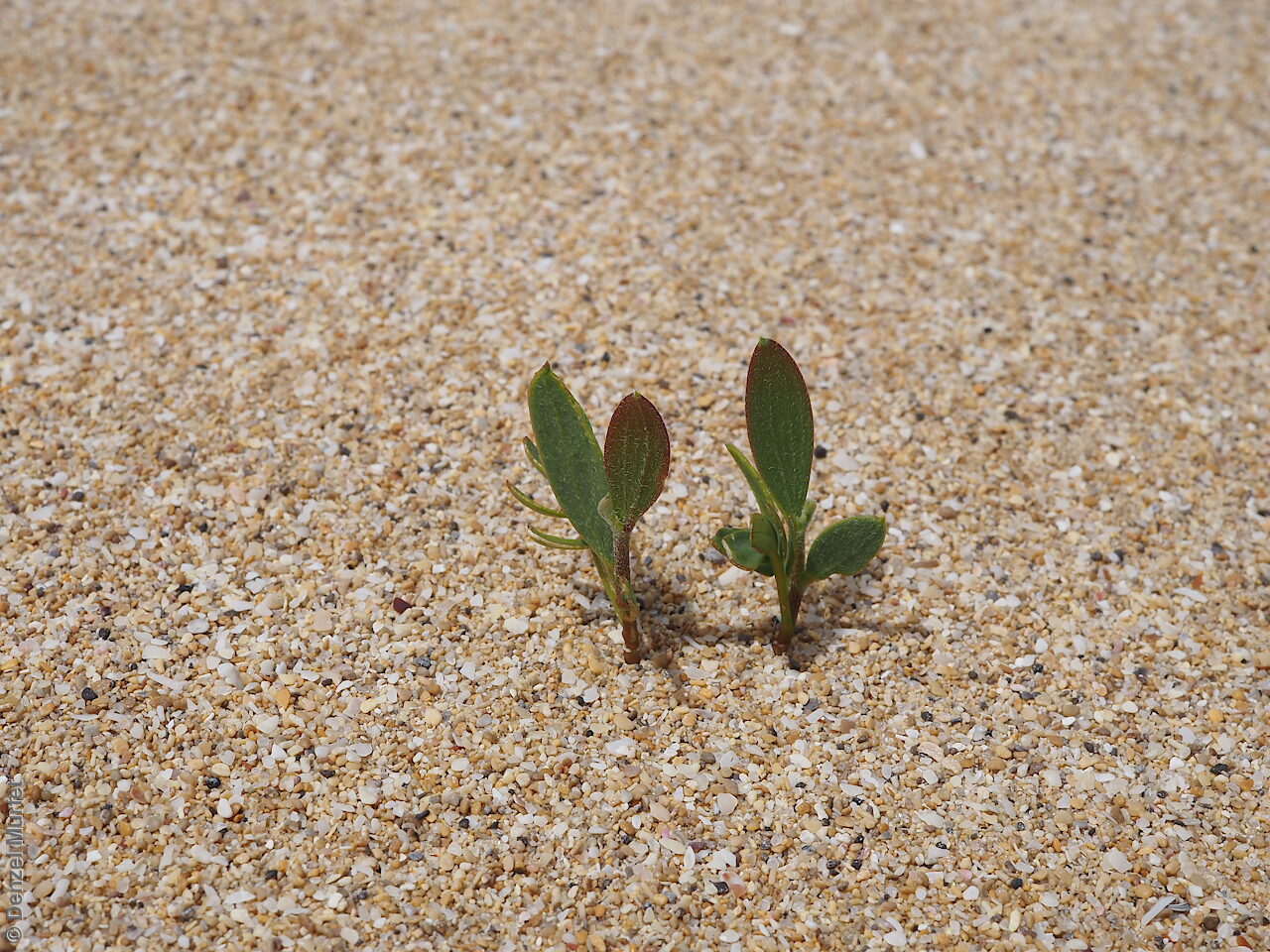

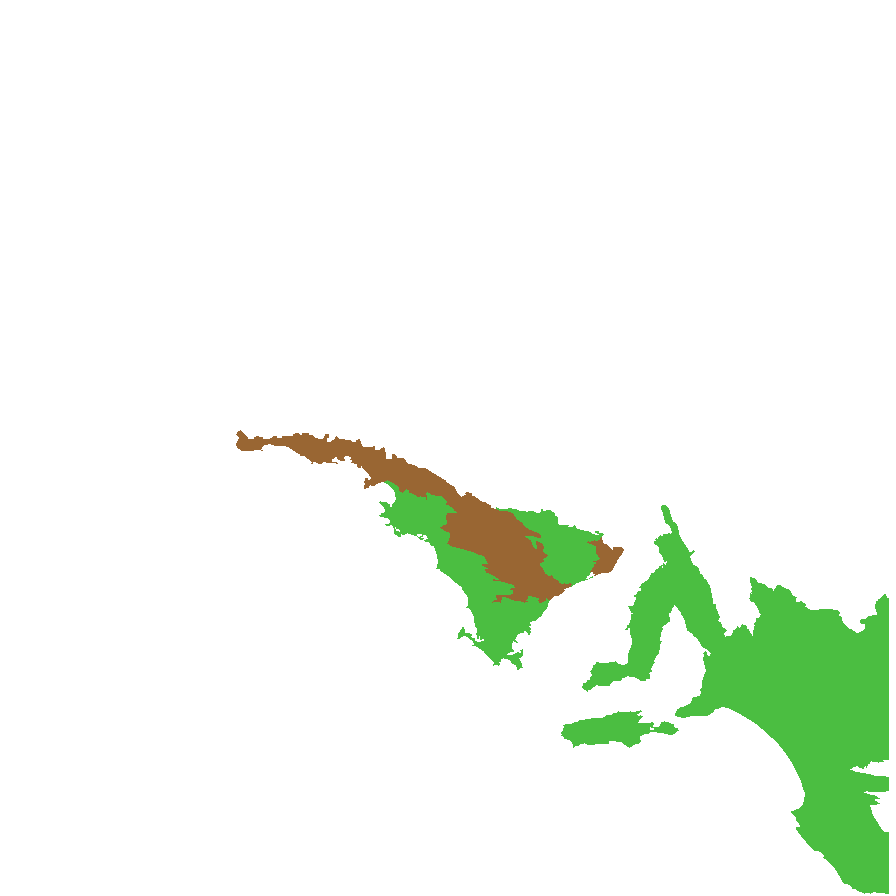
Botanical art
Prior names
Acacia sophorae
Mimosa sophorae
Acacia longifolia var. sophorae
Common names
False Boobialla
Coastal Wattle
Etymology
Acacia from the Greek 'akakia' and derived from 'ake' or 'akis' meaning a sharp point or thorn and 'akazo' meaning to sharpen. Dioscorides, the Greek physician and botanist used the word in the 1st century AD for the Egyptian thorn tree, Acacia arabica. Longifolia from Latin meaning long leaves; referring to long phyllodes on this species. Sophorae derivation uncertain but possibly referring to the broad leaves being similar to some species in the genus Sophora.
Distribution and status
Found in coastal and sub-coastal parts of South Australia from the Eyre Peninsula, Kangaroo Island to the lower South-east, growing in coastal sand-dunes and nearby heaths and woodlands. Also found in Queensland, New South Wales, Victoria and Tasmania and naturalised in Western Australia. Native. Common in South Australia. Common in the other States.
Herbarium regions: Eyre Peninsula, Murray, Yorke Peninsula, Southern Lofty, Kangaroo Island, South Eastern, Green Adelaide
NRM regions: Adelaide and Mount Lofty Ranges, Eyre Peninsula, Kangaroo Island, Northern and Yorke, South Australian Murray-Darling Basin, South East
AVH map: SA distribution map (external link)
Plant description
Prostrate shrub when growing on exposed coastal dunes or erect shrub to 3 m high in more sheltered locations. Phyllodes obovate oblong or oblong-elliptic to 10 cm long and 35 mm broad, yellowish-green, much more broadly obtuse than ssp. longifolia. Inflorescences axillary with 1-2 cylindrical, bright yellow flowers to 5 cm long. Flowering between June and October. Fruits are brown, coiled or contorted pods, somewhat leathery and sometimes drawn out into a long beak.This subspecies can be distinguish from A. longifolia ssp. longifolia by the phyllodes being mostly wider at or above the middle (those of ssp. longifolia are mostly wider at or below the middle), and usually narrow abruptly at the apex (those of ssp. longifolia narrow gradually towards). Seed embryo type is investing.
Seed collection and propagation
Collect seeds between October and December. Collect mature pods that are turning brown with hard, dark seeds inside. Place the pods in a tray and leave to dry for 1-2 weeks or until the pods begin to split. Then rub the dried pods to dislodge the seeds. Use a sieve to separate any unwanted material. Store the seeds with a desiccant such as dried silica beads or dry rice, in an air tight container in a cool and dry place. Seed viability is usually high. This species has physical dormancy that needs to be overcome for the seed to germinate (e.g. nicking or softening the seed coat).